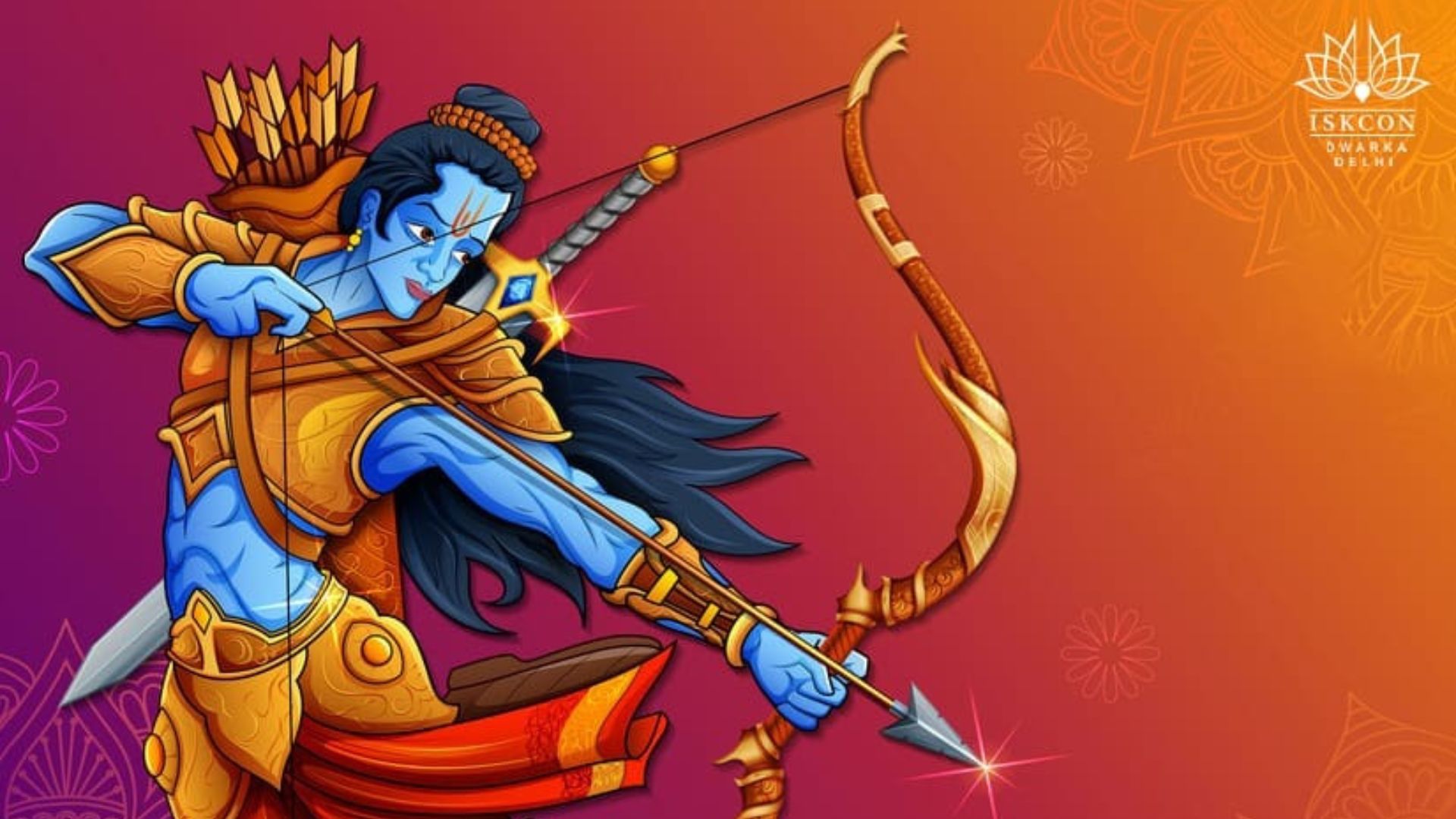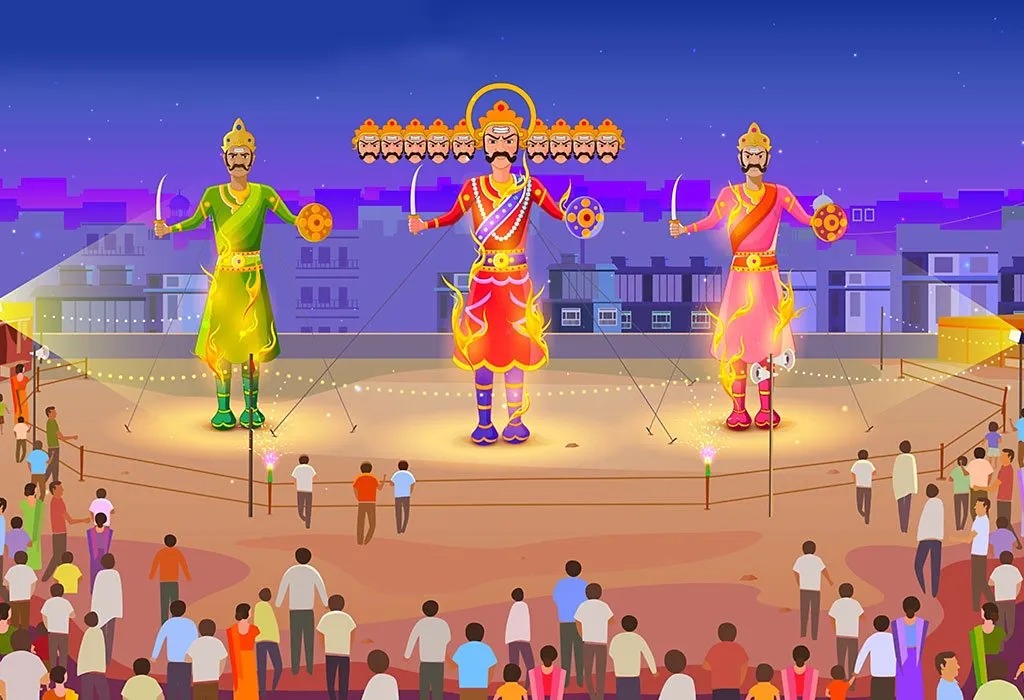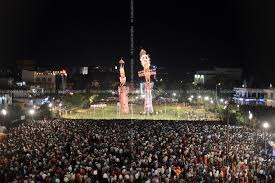
Dusshera , also called Vijayadashami, is an important Hindu festival celebrated in India and other regions of South Asia. Dusshera means “ten” (dash) and “hara” (harna) – it means “to defeat good and evil”. To defeat lust, anger, greed, attachment, ego, jealousy, violence, laziness, deceit, obstinacy. The significance of this day primarily lies in celebrating the victory of good between good and evil. The main significance of Dussehra is associated with the victory of Lord Rama over the demon Ravana. According to the Hindu epic “Ramayana”, Ravana kidnapped Lord Rama’s wife Sita and imprisoned her in Lanka. Lord Rama, along with his devotee Hanuman and with the help of an army of monkeys, fought a war against Ravana. On the tenth day of this war, Lord Rama defeated Ravana and killed him, saved Sita, and proceeded towards the defeat of the evil one. Dussehra commemorates the victory of good fortune and good, And it shows the importance of following moral and religious values in life. It is considered a sign of the victory of good over evil.

Religious significance Dussehra is celebrated in India for various reasons:
1. Religious significance: Dussehra shows that Lord Rama had destroyed unrighteousness by killing Ravana, which is described in the poetry of Ramayana. According to Valmiki Ramayana, Lord Rama had worshiped Adishakti from Ashwina Pratipada Senmeet Navami on the Rishyamook Mountain. After this, Lord Shri Rama went to Kishkindha, Lanka on the same day. It is also said that Dussehra is celebrated because of the killing of Ravana. Shri Ram had seen Neelkanth before killing Ravana. Neelkanth is considered to be the form of Lord Shiva. Hence, it is very auspicious to see it on the day of Dussehra.
2. End of Navratri: Dussehra is celebrated on the last day of Navratri and is celebrated as the victory of Mandurga. On this day, on the request of the Gods, Goddess Matatayani Durga killed Param Mahishasur and hence Vijay Utsav was celebrated on this day. Due to this, it came to be known as Vijayadashmi.
3. Worship of the family deity/deity: On this day, the family deity/deity is also worshipped.
4. Social significance: The festival of Dussehra promotes social interaction and people wish for prosperity and good fortune.
5. Art and Culture: Organizing Ramlila and Durga Puja on Dussehra also promotes art and culture.
6.On this very day, the Pandavas resided in the forest.
7. On this day, the Pandavas had won over the Kauravas. On this day, as soon as the exile ended, the Pandavas, after worshipping Shakti, took back their weapons kept in the Shami tree and attacked the Kaurava army which had stolen Virat’s cows and won.
8. It is believed that on this day, Goddess Shakti was asked for fire.
9. From this day, Chaturmas ends with the end of the rainy season.
10. It is believed that on the day of Dussehra, Kubera gave gold coins to the king and turned the leaves of Shami into gold, since then Shami is considered a tree that gives gold.

Scientific importance of Dussehra: There is some scientific purpose behind every festival celebrated in India. The puja material used on the day of Dussehra is also completely scientific. First of all, we use cow dung in the puja ritual. Cow dung has been found to have disinfectant properties. Due to the moisture in the atmosphere after the month of Savanvabhadra, Innumerable living beings are born. Whenever kanda made from cow dung is burnt in worship, it protects us from many diseases in the form of anti-bacterial. Burning of kanda provides anti-pollution pure air and cleans the environment of our house.
Scientific importance of worship material – Rice used in worship purifies our planet Moon. Offering rice reduces our mental pain.
– Offering yellow marigold flowers to Shri Ram during Dussehra puja purifies our Guru Graha. Also, the fragrance of marigold has medicinal properties, which protects from mosquitoes and other creatures.
– In the worship of Goddess Mandurga, red rose flower provides us with strength. The smell of rose creates balance and harmony in the environment. The fragrance of rose increases the efficiency of a person and keeps him stress free.
− Kheer Prasad is made at the time of Dussehra puja. By distributing Kheer Prasad, a person’s planets are purified and the obstacles in life are reduced.
Lighting incense sticks at the time of worship infuses positive energy into the environment. Agarbat eliminates negative energy.
-Sister applies Vijaya Tilak to her brother Roli. Roli balances his brother’s Ajna Chakra and inspires him to move forward with strength.
Doing these measures on the day of Dussehra brings happiness, prosperity and freedom from enemies:
1. Worship should be done in the afternoon on the day of Dussehra. On this day, worship should be done by making an Ashtadal Chakra with 8 lotus petals in the north-east corner of the house.
2. Jaya and Vijayadevi should be worshipped. When the stars rise in the evening, one should go out of one’s locality and shout in front of the temple of Mother Goddess.
3. A lamp should be lit near the Shami tree and Lord Ram should be meditated upon.
4. On the day of Dussehra, Mother Goddess should be worshiped in the auspicious time at noon and 10 types of fruits should be offered.
5. It is considered auspicious to see the bluethroat bird on the day of Dussehra.
6. On the day of Dussehra, Hanumanji should be worshiped and Hanuman Chalisa should be recited.
7. On the day of Dussehra, one should donate a broom in the temple while meditating on Goddess Lakshmi.
8. On the day of Dussehra, one should sing ‘Ponchal’ in the house.
9. Rangoli should be made at home on the day of Dussehra.
10. On the day of Dussehra, halwa should be prepared and eaten with family members.
Dussehra is not just a festival of religious significance but also one that promotes social harmony, cultural expression, and scientific practices that benefit both individuals and the environment. The rituals and customs associated with Dussehra highlight the importance of moral values, victory over evil, and the celebration of good fortune.















